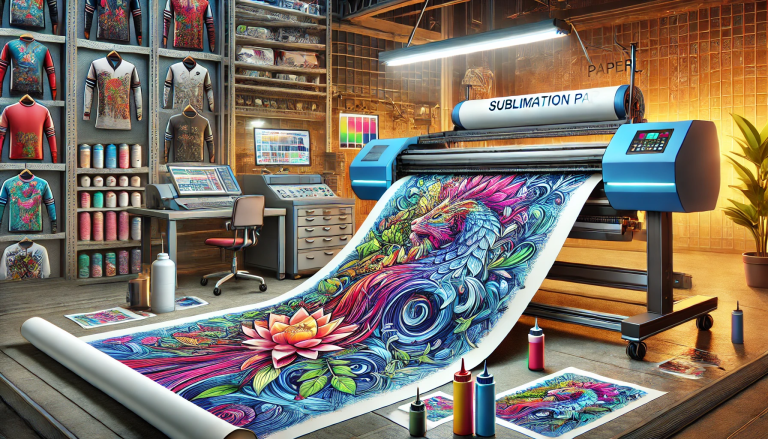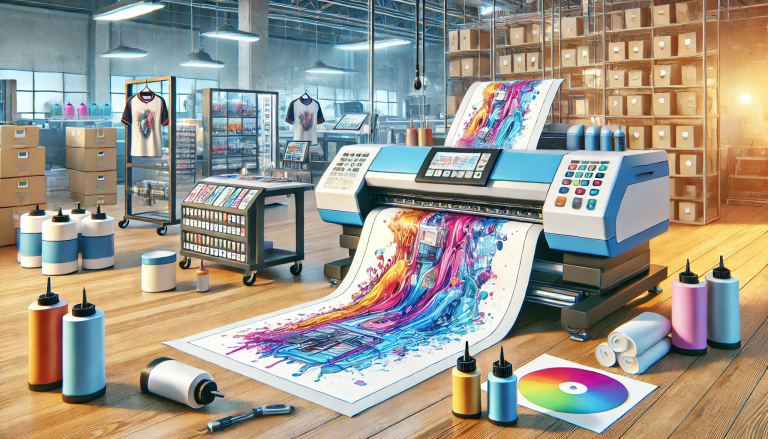“Don’t let your inkjet sublimation paper transfer let you down – try Quick Dry!” – SUBLIMATIONTRANSFERPAPER – Dye Vinyl Sublimation Paper Wholesale, Digital Vinyl Sublimation Paper Supplier, Made in China
Inkjet sublimation printing has become a popular method for producing high-quality personalized products, such as textiles, mugs, and other items. However, one common issue that users face is when the Quick Dry Inkjet Sublimation Paper does not transfer the design properly. This can be frustrating, especially when you’re following all the steps correctly. In this article, we’ll explore the possible reasons why the transfer might fail and how you can troubleshoot the problem.
1. Incorrect Paper Selection
One of the most common reasons for a failed transfer is using the wrong type of sublimation paper. Quick Dry Inkjet Sublimation Paper is designed specifically for the sublimation process, but it’s crucial to ensure that the paper is compatible with your printer and the sublimation inks you’re using. Using regular inkjet paper or other types of transfer paper will not yield the desired results. Always check the specifications of the paper and make sure it’s suitable for sublimation printing.
Additionally, poor-quality paper can also cause issues. Quick Dry papers are known for their fast drying time, but if the paper is not of high quality, it may not absorb the ink properly, leading to a poor transfer. Investing in a reputable brand of sublimation paper can significantly improve your results.
2. Incorrect Printing Settings
Another common issue is incorrect printing settings. Even with the right paper, if your printer settings are not optimized for sublimation printing, the transfer can fail. Make sure to select the correct paper type (usually labeled as “sublimation paper”) in your printer’s settings. Some printers may have a specific setting for sublimation printing, so be sure to check the manual.
It’s also important to ensure that the print is not too light or too dark. A print that is too light may not transfer properly, while a print that is too dark can cause the colors to bleed or become muddy. Adjust the color settings in your software to achieve the best balance of color and contrast.
3. Improper Sublimation Process
The sublimation process itself requires precise temperature and timing to be successful. If the heat press settings are incorrect, the transfer will not work as intended. Quick Dry sublimation paper is designed to transfer quickly, but this doesn’t mean you can rush the process.
A common mistake is not allowing the paper to dry completely before pressing. Even though it’s called “Quick Dry,” the paper still needs time to fully dry after printing. If you press the paper too soon, the ink may not transfer properly. Allow at least 10-15 minutes for the paper to dry completely before starting the transfer process.
Additionally, ensure that your heat press is set to the correct temperature (usually between 385°F and 400°F or 195°C to 205°C) and that you apply consistent pressure for the recommended time (usually 30-60 seconds). Variations in temperature or pressure can lead to uneven transfers or complete failure.
4. Substrate Issues
The substrate you’re using can also affect the transfer process. Sublimation works best on polyester or polyester-coated materials. If you’re trying to transfer a design onto a material that doesn’t have enough polyester content, the ink may not transfer properly. Always check the compatibility of your substrate with the sublimation process.
Another issue can be the surface of the substrate. If the surface is not smooth or has any imperfections, the transfer may not be uniform. Ensure that the substrate is clean and free of dust or oils before starting the process. A dirty or wrinkled surface can interfere with the transfer and result in a poor-quality print.
5. Environmental Factors
Environmental conditions can also play a role in the success of your sublimation transfer. High humidity can affect the drying time of the sublimation paper, leading to issues with the transfer. If you’re working in a humid environment, consider using a dehumidifier to control the moisture level in your workspace.
Additionally, temperature fluctuations can affect the performance of the sublimation paper. Store your paper in a cool, dry place to maintain its quality. Exposure to excessive heat or moisture can cause the paper to degrade, leading to poor transfers.
Conclusion
If your Quick Dry Inkjet Sublimation Paper did not transfer properly, there are several potential causes to consider. From incorrect paper selection and printing settings to improper sublimation process, substrate issues, and environmental factors, each of these can impact the outcome of your transfer. By carefully examining each step of the process and making the necessary adjustments, you can improve your chances of achieving a successful sublimation transfer. Remember to always use high-quality materials, follow the recommended guidelines, and maintain a controlled environment to get the best results.



